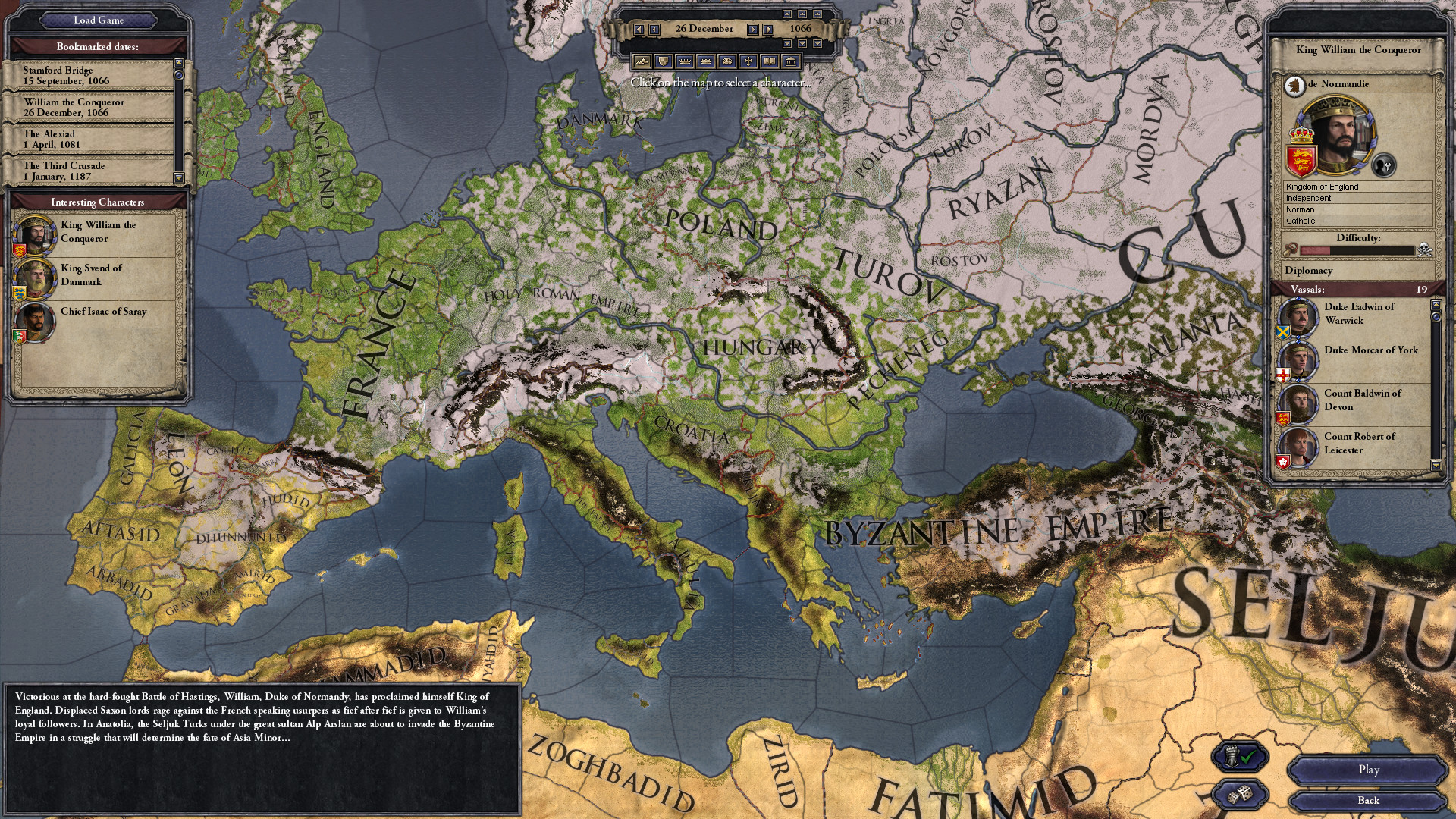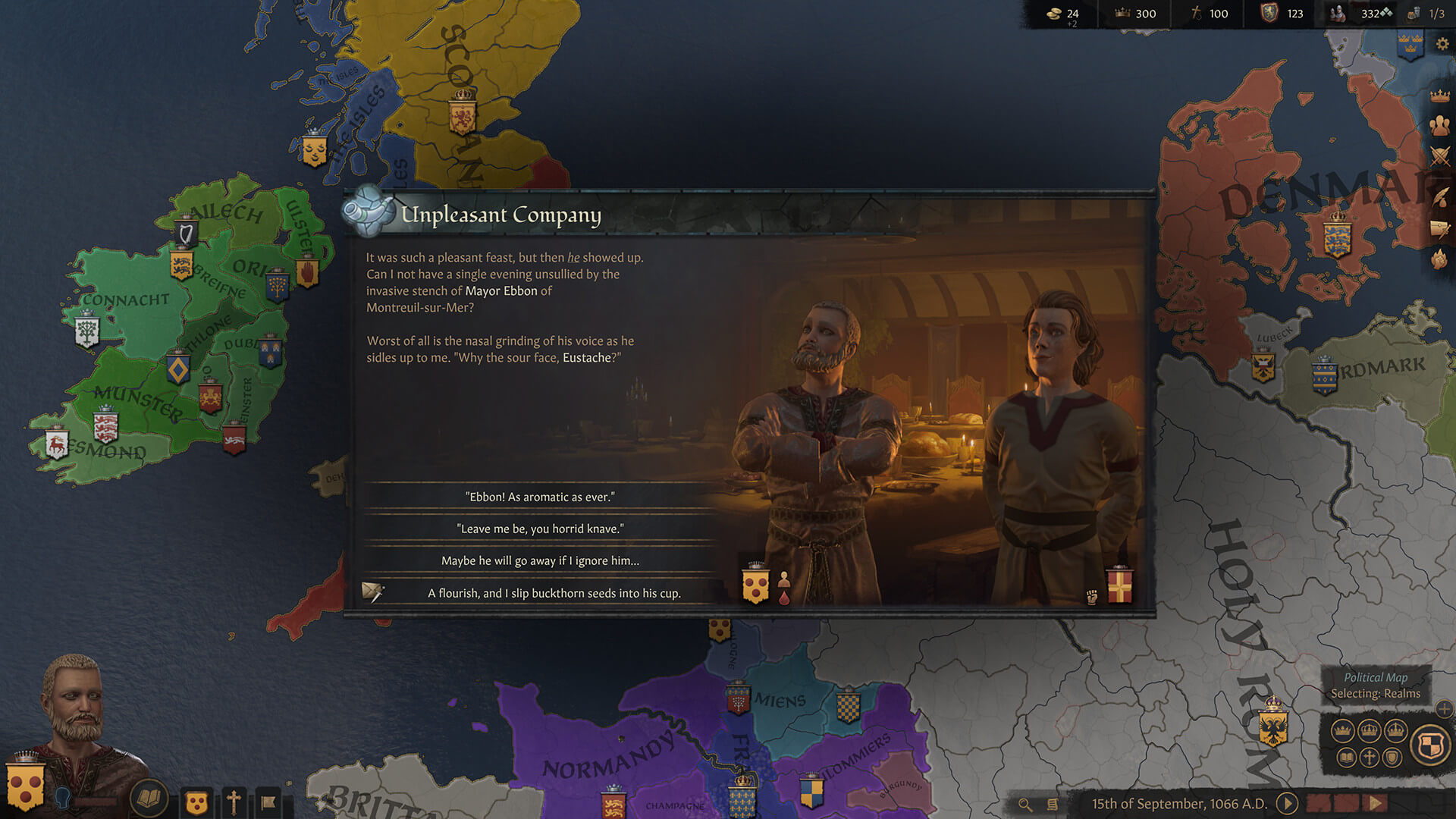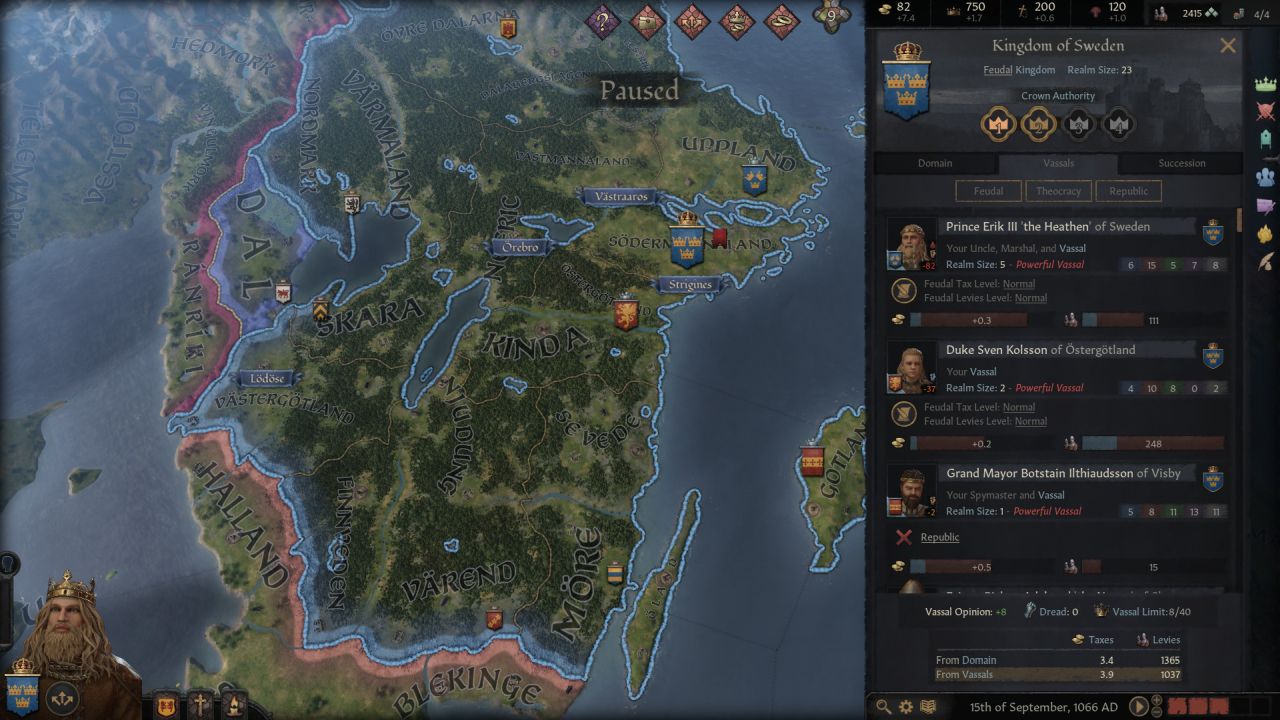

The traits you cultivate for your character won’t just inform their abilities, but the types of things that happen to them. So if you want to be a warrior-poet or an assassin-saint, you can have it your way. That’s 135 perks in total, and as I understand it, you can work across any of the fifteen skill trees simultaneously, although it’ll be rare to get very far in more than one lifestyle. At launch, the game has five lifestyles to choose from - strategic, economic, scholarly, intrigue-y and religious - within each of which are three skill trees bearing nine perks. “I think it might be the idea I was most happy with,” says Fåhraeus, “and it almost felt like it should have been there from the start.” Not all of the CK2 DLC features have returned for the sequel (like the nomad states introduced in Horse Lords, which never worked quite the way Paradox wanted them to, and so have been retired) but Way of Life was transformative. This has been grown out of the lifestyle focus mechanic from Way Of Life, one of CK2’s most popular expansions.
CRUSADER KINGS III GENRES HOW TO
They bring the characters of your family members and rivals - usually the same people - to the surface, perhaps making roleplaying more instinctive.īut how to form your own ruler’s character? As well as the traits which will presumably inflict themselves on you as a result of random events and your own decisions (I hope this makes a return from CK2, where throwing a feast could lead to you gaining an innate sense of justice), there’s a whole new skill tree system. Much like the new “suggestions” feature, which allows you to scan over a list of things you might want to do at any given time (pursue title claims, start wars, attack children with reptiles), the portraits feel like a way of making the hidden more visible, without obstructing or patronising veteran players. Every character has an adjective-noun descriptor string extrapolated from their personality values, but I could tell he was a blackguard just by looking at him - he’s got a stooped, glowering demeanour, and massive Resting Bitch Face. “Bold Blackguard” reads the text next to the name of one bloke I’m shown. They’re animated without being gaudy, and one look at a character gives you the measure of them.

These portraits make it into the game too, replacing the 2D portraits of CK2 and their occasionally weird ageing. Art is a long way from done on CK3, but the models already look clearly related, their hair and facial features showing off the sims-esque genetic modelling built into the game’s back end. This is clear right from the game’s menu screen, which renders three members of the dynasty you’re currently playing, standing around looking medievally shifty. This is one of the game’s fundamental design principles: as game director Henrik Fåhraeus puts it, “this is a game about characters, so characters should matter in every single feature”. More than in CK2, however, all of them are affected by who your ruler is as a character. And the mechanics used to manipulate it are as varied as they ever were. Four times the size, in fact, which brings it to a par with the vast map of Imperator: Rome.
CRUSADER KINGS III GENRES FULL
Crusader Kings 3 is about exploiting a range of interlocking systems - from military power to succession law to church doctrine - to grab big metal gauntlets full of power, and rise to the top of the medieval world. Let’s be clear: it’s still very much a strategy game. But from what we’ve seen so far, it looks like it might just have edged over the line from “a strategy game with RPG elements” to “an RPG you play on a map”. Crusader Kings 3, its freshly-announced sequel, has this same mix of ingredients.

It mixes Paradox’s grand strategy formula with a big bucket of RPG flavour, creating something that’s just as playable as an emergent storytelling toy as it is as a wargame. Crusader Kings 2 isn’t the easiest game to define.


 0 kommentar(er)
0 kommentar(er)
